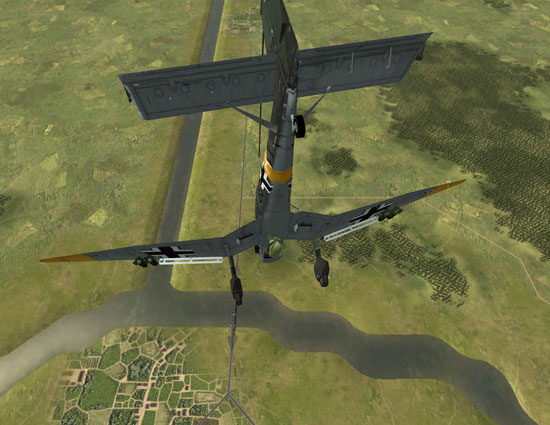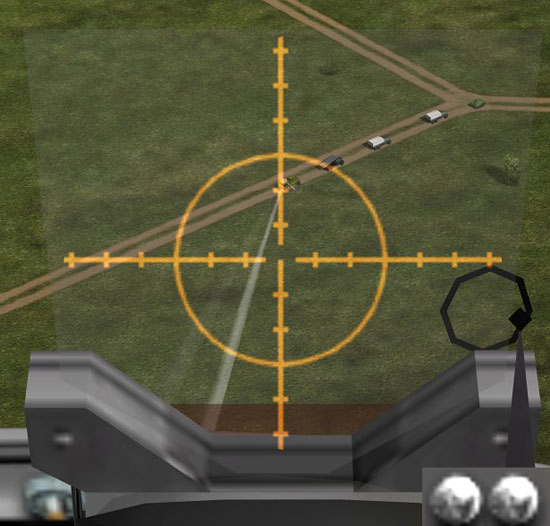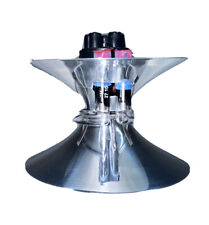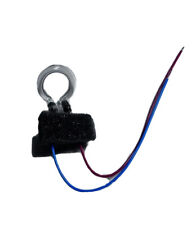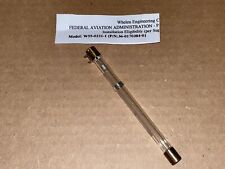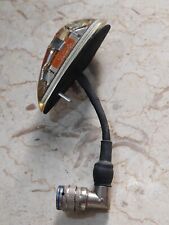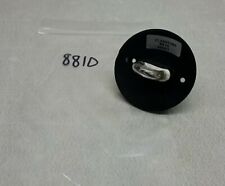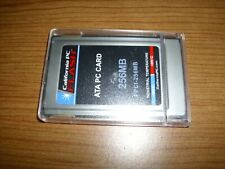Introduction
In World War II, almost every fighter aircraft from each of the combatant nations was given ground attack missions to perform. Often it proved more dangerous to the pilot than aerial combat, and as difficult to achieve kills. Disruption of the enemy, however, was a major goal in and of itself: scattering a company of Infantry or slowing convoys (and forcing them to change their deployments) can make or break battles.
In flight simulations, suppression of ground forces is pretty much meaningless; the impact of harassment and interdiction missions is one of tiny effects that aggregate across a theatre. More importantly, the number of combat sorties against ground targets doesn’t result in a measurable score for the player: only destroyed ground objects count.
In the IL-2 series, no option for simply damaging vehicles exists — to paraphrase Yoda, there is no disable; there is only destroy or do not destroy.
However, there are more similarities between aerial combat and ground attack than there are differences. The same principles of Look-Decide-Act apply; convergence of guns and cannon on target is critical for a mortal strike; and aircraft energy management is essential to survival.
The differences are mainly the munitions used and the defensive maneuvers of the enemy. In addition to machine guns and cannon, ground attack can involve rockets and bombs. The enemy is restricted to traveling along the surface of the planet, while the pilot is restricted to traveling everywhere but the surface. The offensive advantage is to the airplane; the defensive advantage is to the ground target if armed (and the aircraft if not) for only a third of the attack.
Aircraft Setup and Munitions
If one knows the types of targets available, munitions selection can go a long way to ensuring success. Ground targets really come in three varieties: Soft, Medium, and Hard.
Soft targets are unarmored or very lightly armored, such as motor cycles, trucks half tracks, and aircraft on the ground. The rule of thumb is that if it has wheels or an open top, guns and cannons alone can usually destroy them.
Gun convergence for ground attack shouldn’t be much different from the one a pilot normally has on his aircraft, as there might be enemy planes before, at, or on the way home from the strike mission. For the purposes of this article, we’ll use the standard 300 meter convergence for both that was common of all the combatant armies.
Medium targets consist of light tanks, light anti-aircraft guns, small ships and small buildings. The PzKpfw I, II and III series on the German side, the KV-1 on the Soviet Side, and the Sherman on the USA side can all be destroyed with rockets, for example. Anti-aircraft guns with light armor but a high rate of fire with large caliber shells (such as Flak 38’s, Bofors, and quad .50 half tracks) get elevated to Medium even though they can be destroyed with guns and cannon.
On aircraft that can be outfitted with rockets, I suggest a convergence that is 200 meters further out than cannons and guns (500 meters). This compensates for the tendency of most pilots to shoot short of the target (further convergence points the rocket upwards slightly to the path of flight) and spreads the rockets out a bit when they impact, giving a greater chance of hit. In the IL-2 series, one rocket striking a target is usually enough to destroy it, so we don’t really gain anything by concentrating on forcing two hits.
Hard targets, of course, are everything else — heavy armor like the Tiger and T-34 tanks of the Germans and Soviets, 88mm flak guns, and large buildings. Large groups of light targets also rate the munitions that best serves tough skinned targets — bombs.
We’ll be performing level bombing rather than dive or skip bombing today.
There’s a bit of controversy on time delay for bombs within the flight simulation community; some nations simply didn’t allow for it and equipped bombs with impact fuzes or simply set the time fuzes to zero – they blew up the second they struck something. I’m not a purist in this matter, and if one can put the book titled Time Fuze Doctrine of World War Two (Volume IV) back on the shelf and suspend disbelief, I highly recommend a one second delay to ensure one is well away from the bomb before it explodes. Delay of more than one second can be disagreeable if the target decides to drive off while you’re dropping a bomb on it!
Anti-aircraft Positions and Ships
Because they are a serious threat to the attacker, a modified attack profile is used against anti-aircraft positions and ships. We’ll cover them in a future article.
The Attack Profile
The attack flight profile is fundamentally the same for all aircraft against every land target except anti-air defenses. The optimum attack run starts from an altitude of around 1,000 meters (3,000 feet) from about twice that distance at 240-260 KPH (150-160 MPH), approaches at around 35-45 degrees, and egresses at 150 meters (500 feet) altitude and around 350-400 KPH (220-250 MPH).
Speed, naturally, is dependant on the type of aircraft — but the intent is to allow the pilot sufficient time to line up properly and hit the target as well as to prevent over speeding and the controls from locking up. I like early war planes, so the airspeeds given are for the Yak-1b and the Hurricane.
Faster aircraft follow the same attack profile as slower ones, but require a larger distance from the target on the initial line up in order to give sufficient time to get the plane in the proper firing position.
Pacing
Before we get too deep into the nuts and bolts of ground attack, I can’t stress enough how important pace is in the strike.
Most misses are due to the pilot rushing himself to line up for the strike or committing to a poorly lined up attack.
Ground targets move at about 30 KPH (20 MPH) cross country and not much faster (no more than double) on roads. They’re not getting away once an aircraft spots them. Aborting a bad run that has little likelihood of success in order to set up a better one where a hit is probable isn’t a waste of time; the opposite is true.
The pilot that is patient and smooth with the controls wins the day in ground attack.


